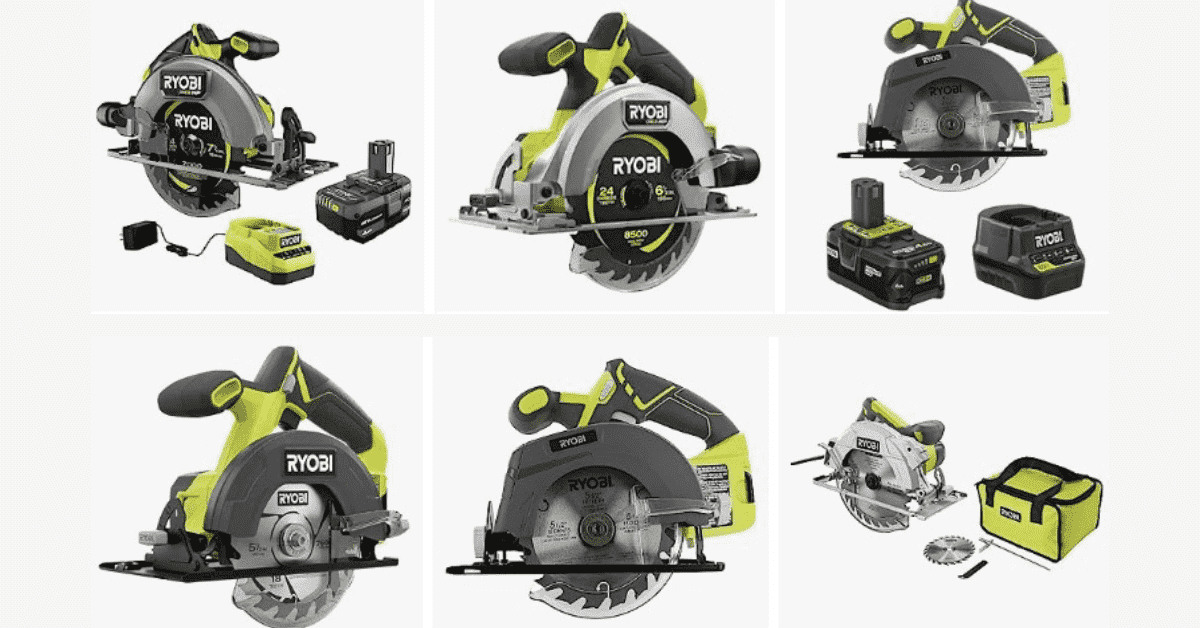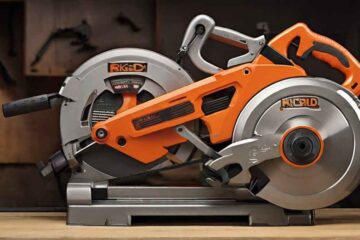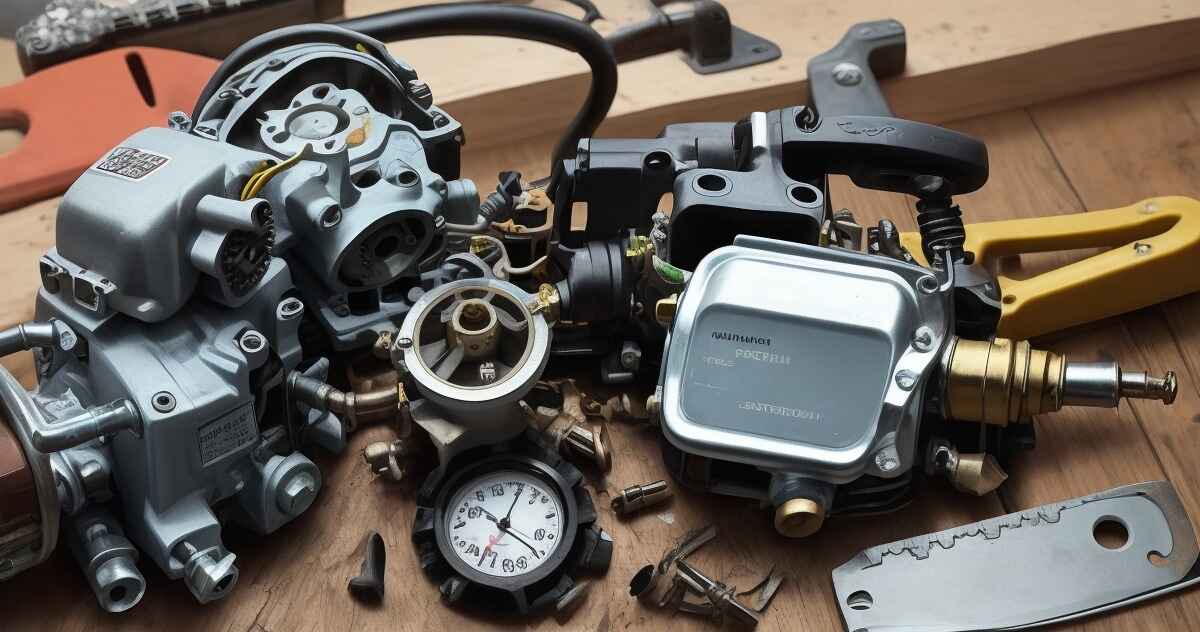Ryobi circular saw is a valuable addition to your toolkit if you’ve recently acquired one. In addition to cutting wood and plastic, circular saws can even cut metal. To ensure safety and make the most of your saw, it’s essential to know how to use Ryobi circular saw. In this comprehensive guide, we will walk you through the steps, precautions, troubleshooting tips, safety guidelines, and expert advice for effectively using a Ryobi circular saw.
Safety Precautions
Before diving into the technical aspects of using your circular saw, let’s prioritize safety.
A. Essential Safety Gear
Utilizing power tools requires that safety always come first. You should have the following safety equipment.
- Safety glasses: Keep dust out of your eyes.
- Hearing protection: Circular saws can be loud; ear protection is crucial.
- Dust mask: prevent breathing in dust or wood dust.
- Work gloves: Protect your hands from jagged edges and splinters.
- Appropriate clothing: Avoid clothing that is loosely fitted and may become caught in the saw
B. Safe Workspace
Create a safe working environment:
- Well-lit area: Ensure proper lighting to see your work clearly.
- Stable work surface: Use a sturdy workbench or table to support your materials.
- Clear workspace: Remove clutter and obstacles to maintain a clean area.
- No wet wood: Never cut wet or damp wood, as it can lead to slipping and accidents.
C. Potential Hazards and Precautions
Identify and address potential hazards:
- Unplug the saw: Always unplug the saw before making any adjustments or changing the blade.
- Cord management: Keep the saw’s cord out of your cutting path.
- Material inspection: Check for nails, knots, or foreign objects in the wood before cutting.
- Secure workpiece: Firmly clamp or secure the material you’re cutting to prevent movement.
Reminder: Always double-check that the saw is unplugged before inspecting or changing the blade.
Step 1. Getting to Know Your Ryobi Circular Saw
Before using your Ryobi circular saw, it’s essential to understand its components and features.
A. Overview of Components
- Blade: The cutting component of the saw.
- Base plate: The flat area that supports the substance.
- Handle and trigger: The grip and control for the saw.
- Depth adjustment: Allows you to control the depth of the cut.
- Bevel adjustment (if applicable): Enables you to make bevel cuts.
B. Key Features
Take note of these key features:
- Blade guard: A retractable cover that protects the blade when not in use.
- Rip fence: A guide that helps make straight cuts.
- Bevel scale: Indicates the angle at which you’re cutting (if applicable).
- Depth scale: Shows the depth of the cut.
Step 2. Preparing the Workpiece
A. Choosing the Right Material
Select the appropriate wood or material for your project. Ensure it’s free from defects, knots, or foreign objects that could interfere with the cutting process.
B. Measuring and Marking
Measure and mark your cut lines accurately using a straightedge and a pencil. Double-check your measurements to avoid mistakes.
C. Securing the Workpiece
To prevent movement while cutting, secure your workpiece to your work surface using clamps or another reliable method. This stability is crucial for precise cuts.
Tip: Support the workpiece at both ends, especially when making long cuts, to prevent sagging.
Step 3. Adjusting the Ryobi Circular Saw
Proper adjustment of your circular saw is key to achieving accurate cuts.
A. Setting the Depth of Cut
Adjust the cut depth based on your project’s needs. To do this:
- Release the depth adjustment lever.
- Adjust the blade depth by loosening the lever.
- Align the desired depth with the depth scale.
- Tighten the lever to lock the blade at the chosen depth.
B. Adjusting the Bevel Angle (if applicable)
For bevel cuts, adjust the bevel angle as follows:
- Release the bevel adjustment lever.
- To achieve the desired angle, tilt the base plate.
- Check the bevel scale for accuracy.
- Lock the base plate in place by tightening the lever.
C. Ensuring the Blade is Properly Tightened
Before using your circular saw, make sure the blade is securely tightened. Always disconnect the power source when inspecting or changing the blade.
Step 4. Making Straight Cuts
If you learned how to use ryobi circular saw, Now that your Ryobi circular saw is properly adjusted, you can proceed with making straight cuts.
A. Proper Hand Positioning and Body Posture
- One hand holds the trigger and the other holds the saw’s handle.
- By keeping your feet shoulder width apart, you will be able to maintain your balance.
- Put your body in a side position, not directly behind the saw.
- Keep a firm grip and maintain control throughout the cut.
B. Guiding the Saw Along the Cutline
- Align the blade with the marked cutline.
- Start the saw, allowing it to reach full speed before making contact with the material.
- Push the saw steadily and smoothly along the cutline, applying gentle pressure.
- Keep the saw baseplate flat against the workpiece throughout the cut.
- .Allow the saw to cut at its own rate without pushing it.
- Keep your eyes on the cutline and your hands away from the blade path.
C. Tips for Achieving Clean and Straight Cuts
- Use a rip fence to guide the saw for perfectly straight cuts.
- Support the material adequately at both ends to prevent sagging.
- Make sure the blade is sharp; replace it if it’s dull.
- Avoid sudden stops during the cut to prevent kickback.
Step 5. Making Bevel Cuts (if applicable)
A. Explaining Bevel Cuts and Their Uses
Bevel cuts are angled cuts commonly used for creating chamfers or adding decorative edges to your workpiece.
B. Adjusting the Saw for Bevel Cuts
Set the desired bevel angle as explained earlier.
Align the blade with the marked cutline on the material.
Follow the same cutting procedure as for straight cuts, maintaining control and safety.
Tip: When making bevel cuts, clamp the workpiece securely to prevent shifting during the cut.
Step 6. Choosing the Right Blade
Different types of blades are available for circular saws, each designed for specific materials and cutting tasks. Choosing the right blade is essential for achieving the best results:
| Blade Type | Recommended Use |
| Wood Blade | For cutting various wood materials. |
| Plywood Blade | Designed for clean cuts in plywood. |
| Metal Blade | Use when cutting metal or non-ferrous materials. |
| Masonry Blade | For cutting concrete, brick, or stone. |
| Diamond Blade | Ideal for cutting tile and ceramic materials. |
| Combination Blade | Versatile option for multiple materials. |
Select the appropriate blade for your project to ensure clean and efficient cuts.
Step 7. Maintenance and Blade Changes
Proper maintenance ensures the longevity and performance of your Ryobi circular saw.
A. Cleaning the Saw After Use
After each use, clean your circular saw:
- Remove sawdust and debris from the blade guard, base plate, and other components.
- Check the power cord for damage and cleanliness.
B. Regular Blade Inspection
Inspect the saw blade regularly for:
- Damage or missing teeth.
- Signs of overheating or warping.
- Dullness or reduced cutting efficiency.
C. Steps to Safely Replace the Saw Blade
If you need to change the blade:
- Disconnect the saw from the power source.
- Remove the blade nut with the wrench provided.
- To replace the old blade, remove it and install a new one.
- Tighten the blade nut securely.
Tip: Before each use, check the blade guard for cracks or damage and ensure it moves freely.
Troubleshooting Common Issues
While using your Ryobi circular saw, you may encounter common problems:
A. Addressing Common Problems and Solutions
- Blade binding: Check for loose workpiece clamps or material that isn’t supported properly.
- Uneven cuts: Ensure the blade is sharp and the saw is properly aligned.
- Kickback: Maintain a firm grip and proper body positioning to prevent kickback.
B. Tips for Preventing Issues During Operation
- Be vigilant and attentive while cutting.
- Keep the saw in good working condition through regular maintenance.
Conclusion
In conclusion, a Ryobi circular saw is a valuable tool for DIY enthusiasts and professionals alike. By following the steps and safety precautions outlined in this guide, you got full knowledge of how to use Ryobi circular saw and can confidently and effectively use your circular saw for a variety of projects. Always put safety first, and remember that repetition makes perfect.




